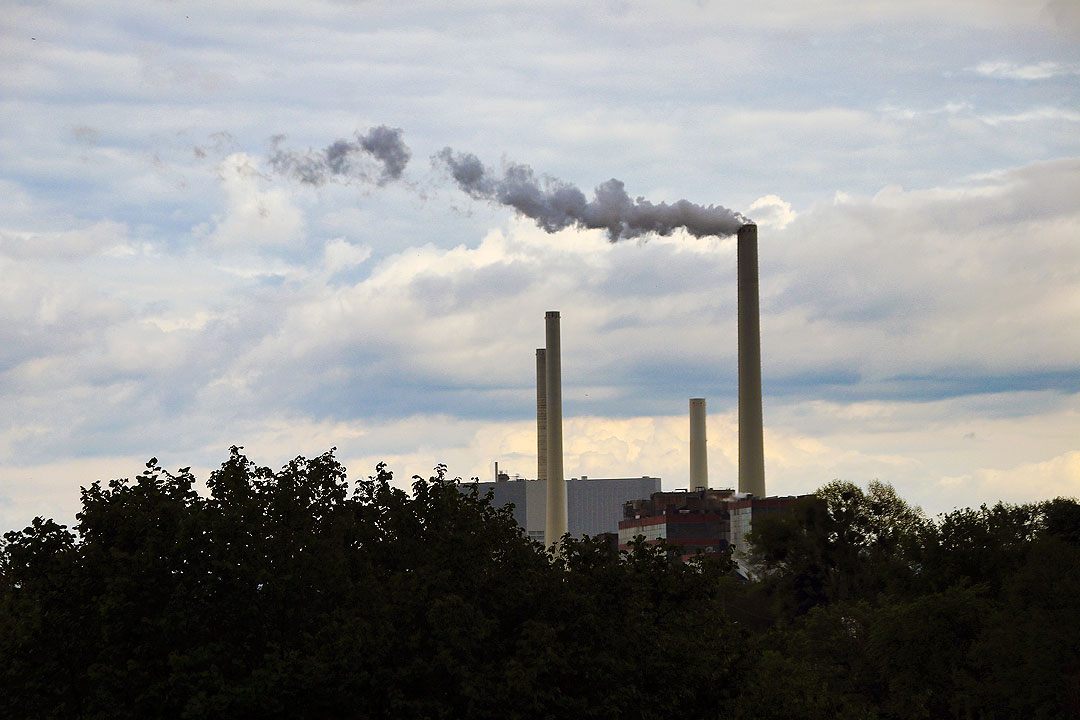Coal plant moratorium to stay — DoE

Ashley Erika O. Jose, Reporter
The Department of Energy (DoE) is maintaining a moratorium on the development of greenfield coal-fired power plants even as most hydropower plants are currently running on derated capacities, resulting in insufficient power supply affecting the main grids.
“The moratorium (stands, if the LNG or liquefied natural gas) power plants would have a higher degree of reliability, then the private sector may opt for that rather than put up coal plants,” Energy Secretary Raphael P.M. Lotilla said in a virtual press briefing on Thursday.
In 2020, the Energy department issued a moratorium on the development of new coal-fired power plants, as the country sought to reduce its dependence on coal.
Mr. Lotilla said the DoE sees no reason to lift the moratorium for now as more than 4,000 megawatts (MW) of power supply is expected to boost the country’s overall supply.
At least 4,164.92 MW of power projects are expected to come online this year, which are expected to boost the country’s overall power supply.
Broken down, 4,030 MW will be in Luzon, 80.25 MW are in Visayas and 52.50 MW are in Mindanao.
About 1,224.655 MW will begin operations within the second quarter, while 1,352.167 MW will go online in the third quarter and 1,571.154 MW by yearend.
At present, 161.20 MW of these committed projects are now in full commercial operation, while 835.888 MW are under the commissioning and testing stage.
The DoE said these power projects are a combination of both renewable energy and conventional power plants and even liquefied natural gas (LNG) powered plants.
The higher-than-expected temperatures this summer months caused hydropower plants to run on derated capacities, the Institute for Climate and Sustainable Cities (ICSC) said.
YELLOW ALERT
On Thursday, a yellow alert status was raised over the Luzon and Visayas power grids for the eighth time this month, the National Grid Corp. of the Philippines (NGCP) said.
The Energy department said yellow alert will continue affecting the country’s main grids until next month due to higher-than-expected temperatures and rising power demand.
According to the grid operator’s advisory, a yellow alert was raised over Luzon from 1-5 p.m and 7-11 p.m. as 19 power plants are still on forced outage while one power plant is running on derated capacity. This resulted in the unavailability of 1,424.3 MW to the grid.
Of the 19 power plants, NGCP said that four have been offline since last year, while three were on forced outage since January. Twelve plants have been on forced outage since April.
Yellow alerts are issued when the supply available to the grid falls below a designated safety threshold. If the supply-demand balance deteriorates further, a red alert is declared.
Luzon’s power demand on Thursday reached 13,941 MW against available capacity of 14,568 MW.
Visayas power grid was also placed under yellow alert from 1-4 p.m., 6-7 p.m., and 8-9 p.m. due to the unavailability of 670.8 MW to the grid.
A total of 24 power plants are offline in Visayas, while 12 are running on derated capacities.
Luningning G. Baltazar, assistant director of the DoE’s Electric Power Industry Management Bureau, said Luzon has already breached the projected peak demand for the year.
Data provided by the DoE showed Luzon hit a peak demand of 14,016 MW on Wednesday against a projected peak demand of 13,917 MW this year. Peak demand in Visayas and Mindanao on Wednesday hit 2,586 MW and 2,534 MW, respectively. Visayas and Mindanao have a projected peak demand of 2,891 MW and 2,584 MW, respectively, for the year.
Energy Undersecretary Rowena Cristina L. Guevara said more yellow alerts, and possibly red alerts are expected until May.
The Energy Regulatory Commission (ERC) said it has already called on six power generation companies to explain the recent power plant outages.
“The ERC expects to have preliminary findings by the first week of May to determine whether show cause orders need to be issued to the relevant stakeholders, in view of possible violations of outage allowances,” ERC said in a statement.
The power regulator declined to identify the six power generating plants as its investigation is still ongoing.
“The Commission is diligently studying additional measures we can put in place under this extraordinary increase in demand, as a result of the effects of El Niño, and unavailability of supply or reserves,” ERC Chairperson Monalisa C. Dimalanta said.
The ERC said it is also monitoring the price of the Wholesale Electricity Spot Market (WESM) as the spot market prices climbed 47% this week.
“While we are completing our investigation on the outages, we are not losing sight of the fact that consumers — households and businesses alike — will bear the brunt of unavailable supply and/or high WESM prices. That is why, early on, we have emphasized to distribution utilities the importance of contracting for power supply to at least avoid exposure to price spikes in the WESM,” Ms. Dimalanta said.
Last year, the ERC said it had imposed a total of P60 million worth of penalties against generation companies for breaching the allowable number of outage days.
